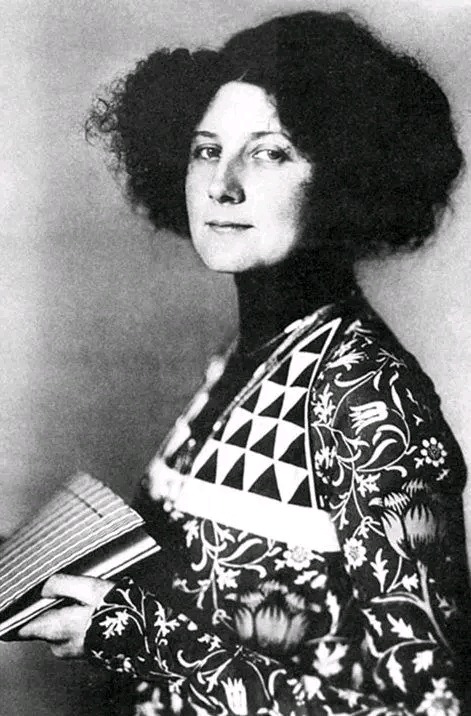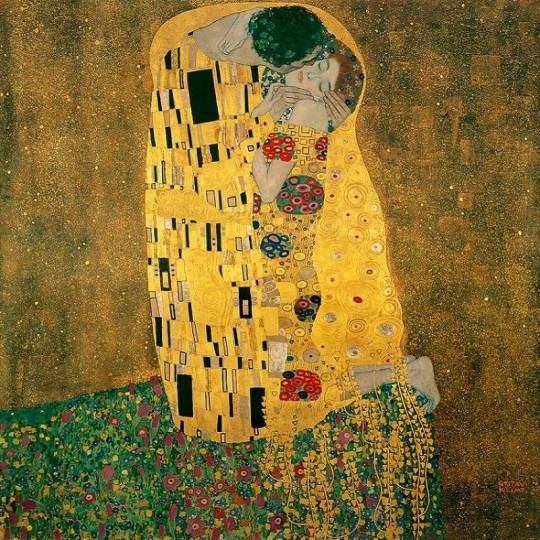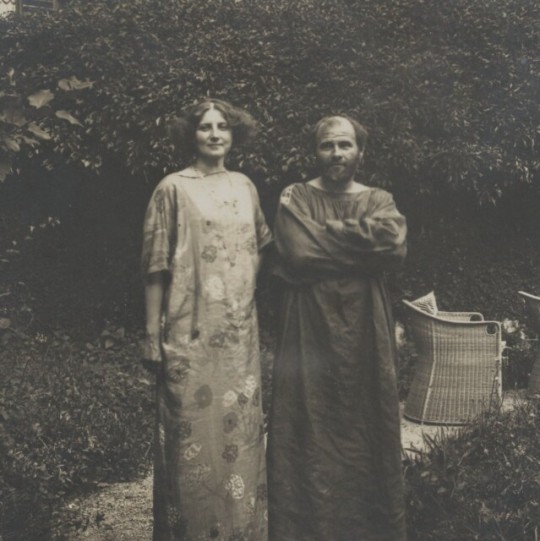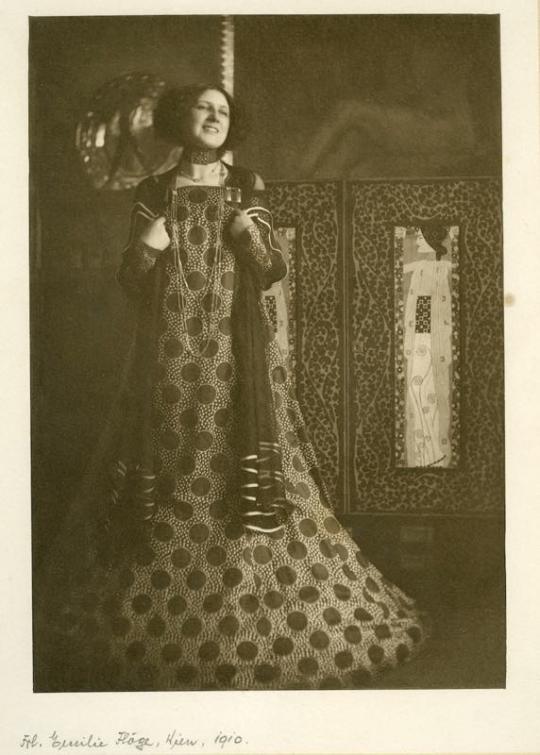#helene flöge
Text

Anonymous. Gustav Klimt, Emilie und Helene Flöge, Litzlberg at Attersee, Austria, 1906 | src Ostlicht
"This private photograph is captivating because of the contrast between the different silhouettes of the three figures, which reveals the emancipatory radicalism of the reform dress. Implicitly, as one might say, this also "quotes" the design element of repeated curved lines, as found in many of Gustav Klimt's compositions."
read more on wordPress
#gustav klimt#emilie flöge#helene flöge#schwestern flöge#emilie floge#vintage photography#vintage photo#family photos#1900s#attersee#lake#jetty#waterscape#dock#wiener werkstaette#Wiener Werkstätte#Wiener Werkstatte#Wiener Werkstaette#Vienna Secession#1900s fashion
264 notes
·
View notes
Text

An uncomfortable smile kissed by the warmth of the sun.
The river held our stories and soothed our sorrows.
The softest breeze lifted the veil of the unseen.
"Anonymous. Gustav Klimt, Emilie und Helene Flöge, Litzlberg at Attersee, Austria, 1906"
#art#photography#vintage photography#vintage#artists#vintage photos#retro#black and white photography#film photography
2 notes
·
View notes
Text


Emilie Louise Flöge (30 Aug 1874 - 26 May 1952) was an Austrian fashion designer and businesswoman.
Emilie Flöge was a member of the Viennese #bohemian and Fin de siècle circles.
Flöge was the life companion and muse of the painter Gustav Klimt, who have used her designs in numerous of his paintings.
Her first job was as a seamstress, but she later became a couturière. In 1894, Pauline, her elder sister, opened a dressmaking school and Emilie worked here. In 1899 the two sisters won a dressmaking competition and were commissioned to make a #batistedress for an exhibition.
In partnership with her sister Helene, after 1904 Flöge established herself as a successful businesswoman and the owner of the #hautecouturefashion salon known as Schwestern Flöge (Flöge Sisters).
#WienerWerkstätte Flöge designed bespoke garments, especially loose, patterned dresses in the reform style (a movement also called Victorian dress reform). This style was promoted by the #feministmovement in Vienna and was characterized by high bodices, a loose silhouette, and billowing sleeves.
It was thought that this type of dress was better for women's health and allowed for a greater range of movement. via Wikipedia
#EmilieFlöge #austrianartists #fashiondesigner #womensart #artbywomen #PalianShow #artistnotmuse #herstory #historyoffashion #artherstory
3 notes
·
View notes
Text

As both maker and muse, avant-garde fashion designer Emilie Flöge’s influence weaves through the history of Vienna and contributes to its allure as a cultural destination today. Born in 1874, Flöge advanced from seamstress to boutique owner at a time of rapid societal change. As she inspired—and was featured within—masterworks by the acclaimed Austrian painter Gustav Klimt, she also pioneered liberation for women through corset-free clothing with flowing silhouettes and ornate decorative motifs.
The fact that Flöge is better known for her collaborative relationship with Klimt neglects her exquisite craft and independent entrepreneurial success in Vienna during the fin-de-siècle. Flöge’s style was part of an international discourse that included French couturiers Paul Poiret, who removed bodices from his creations in 1906, and Coco Chanel, who introduced comfortable but elegant two-piece women’s suits. Though Poiret’s developments were primarily aesthetic, Flöge’s and Chanel’s were ideological and fanned attention to a sense of rebellion.

Flöge, with sisters Pauline and Helene, opened the salon Schwestern Flöge (which translates to “Flöge Sisters”) in 1906, four years before the first Chanel boutique opened in Paris. Being owned and operated by three women was an uncommon undertaking at the time, but its lively location on Mariahilfer Straße welcomed bourgeois women who became regular patrons. It was here that Flöge contributed to the expanding “rational dress movement” of reformed shapes, also known as the “Reformkleid,” where generous cuts with wide sleeves draped playfully over the wearer. Flöge embellished these dresses with patterns that drew inspiration from Eastern European embroidery, which imparted the smoke-like garments with a glamorous Viennese-bohemian spirit. This was radical, unrestricted fashion.
Schwestern Flöge was a predecessor to what we today refer to as a concept shop. Designed by architect Josef Hoffmann (who also imagined Klimt’s studio), it was uniquely furnished with geometric wooden chairs, checkered tables, carpets, and adjustable mirrors. It was also peppered with objets d’art and luxury items, crafted from tortoiseshell and lapis lazuli, that couldn’t be purchased. With the store’s detailed logo, which paired art nouveau text with a checkered border, a fully-formed brand captured the attention of Vienna’s high society.
Flöge’s role as creative head required everything from broad, trend-setting decisions to hands-on production work with clients. The studio expanded to 80 seamstresses at its height, and operated for 30 years. Both feats were a testament to Flöge’s acumen, as was her success beyond Vienna with a curious international market. At home, Schwestern Flöge became the leading fashion destination of its Viennese society—and this innovative venture paved the way for shopping in contemporary Vienna.
Today, concept shops and boutiques abound, from the hybrid fashion, art, and design store SONG, to Park, which highlights established and emerging Austrian designers. While Mariahilfer Straße is still a celebrated destination (especially with locals), Margaretenstraße plays host to the exhilarating boutiques Samstag, Unikatessen, Wolfensson, and more. Walking through the historic city center, as well as the Goldenes Quartier, provides ample access to items beyond clothing and accessories, too.
As fashion is ingrained in Vienna, so too is art. This is due in part to Klimt’s legacy, and his work appears in museums throughout Vienna—especially at the Schloss Belvedere, an acclaimed institution with a detailed Austrian art collection that also includes pieces by Egon Schiele and Koloman Moser.
In his time, Klimt purchased fashionable items from Flöge, but that isn’t how they knew one another. Their lives were intertwined long beforehand, with their first known correspondence taking place in 1895. Though it has been presumed they were in love, both were discreet about anything beyond friendship, which has been observed through nearly 400 written documents that they exchanged.
“Her intricate fashion was very much sought after and, much like Klimt’s paintings, a must-have among the fashionable and artistically minded.”
Sandra Tetter, director Gustav-Klimt-Centre on Lake Attersee
It’s her role in his art that has led to further assumption—from the “Portrait of Emilie Flöge,” where Klimt depicts her with shimmering splendor, to “The Kiss,” which is arguably his most famous work (and on display at Schloss Belvedere). In the former, Klimt displays the revolutionary golden style that will define him. With the latter, a couple—arguably Flöge and Klimt—passionately embrace, adorned with mesmeric attire that resembles her fashion.

In addition to painting Flöge, Klimt worked in collaboration with her. Together, they explored color and form, and she even produced designs that he made. In these, they were photographed together around Lake Attersee, a pristine destination (then and today) with exquisite panoramas. They regularly summered together in various villas along the lake, which today can be toured through the Klimt Artist Trail, organized by Sandra Tetter, director Gustav Klimt Center on Lake Attersee art center, which transports visitors to the artist’s time at the site where he created over 40 landscape paintings.
When Klimt died in 1918, part of his estate went to Flöge, and his purported last words were, “Get Emilie.” Klimt imbued Vienna with a golden luster that mirrors his own artistic achievements. For this, he has become a ubiquitous figure in the arts world, whereas Flöge has fallen into relative obscurity. Her legacy does live on, however, from an honorary grave in the Wien-Simmering cemetery to the global revival of attribution occurring today. Even Maria Grazia Chiuri and Pierpaolo Piccioli referenced Flöge’s “Reformkleid,” through liberated shapes and opulent patterns, with their Fall/Winter 2015 collection for Valentino.
A dazzling contemporary cultural attraction for its art history, grand café culture, extravagant ball season, and sheer natural beauty, Austria’s charm parallels that of Flöge’s—and to think of visiting Vienna or Lake Attersee means looking to her future-forward values and what they mean today.
#Emilie floge#Emilie Flöge#gustav klimt#art#art history#women in history#women in art#vogue#fashion#fashion designers
8 notes
·
View notes
Text


EMILIE FLOGE la musa di Klimt.
Emilie Louise Flöge (Vienna, 30 agosto 1874 – Vienna, 26 maggio 1952) è stata una stilista austriaca.
Quarta figlia del tornitore Hermann Flöge, Emilie crebbe con le due sorelle Pauline ed Helene e il fratello Hermann. Iniziò a lavorare come sarta da giovanissima, raggiungendo alti livelli di fantasia e originalità che la portarono ad affermarsi nel panorama dell'altra moda austriaca degli inizi del XX secolo.
Lo stesso Gustav Klimt ideò alcune delle creazioni realizzate dalle sorelle Flöge.
Grazie a diversi viaggi a Londra e Parigi la Flöge entrò in contatto con le creazioni di Coco Chanel e Christian Dior, che ripropose con variazioni originali per la sua clientela viennese.
Nonostante i successi professionali, la fama di Emilie Flöge è legata soprattutto al suo rapporto con Gustav Klimt, di cui fu compagna per tutta la vita e che la ritrasse in diverse occasioni.
instagram
1 note
·
View note
Text

The Kiss(1907)-Gustav Klimt.
locație: Österreichische Galerie Belvedere( muzeul găzduit de Palatul Belvedere, în Viena, Austria.)
mișcare: simbolistă, Art Nouveau.
„Când am spus că desenele sunt toate la fel, nu am fost chiar exactă. Unul este diferit. Acesta este cu un bărbat care îmbrățișează o femeie și îi întoarce fața spre privitor cu o expresie de fericire pură…” (Emilie Flöge)
Conform unor zvonuri care circulau în mediile artistice din epocă, perechea de îndrăgostiţi reprezentată în „Sărutul" nu ar fi reprezentată de nimeni alţii decât de Gustav Klimt şi partenera lui de o viaţă, Emilie Flöge. Klimt a cunoscut-o pe Emilie şi pe familia acesteia prin fratele său Ernst care a fost căsătorit cu sora lui Emilie, Helene. Salonul de modă al familiei Flöge a fost decorat de Gustav Klimt şi de Kolo Moser, iar Klimt şi artiştii Atelierelor Vieneze au furnizat numeroase schiţe pentru râvnitele produse ale atelierului Flöge.
Emilie Louise Flöge, muza acestui Sărut pictat, nu a fost nici iubita, nici soția lui Gustav Klimt, istoricii nu au confirmat relația lor de iubire, însă a fost singura Femeie care a știut cum să țină barca în echilibru, cea care l-a inspirat până la sfârșitul vieții și cea care s-a lăsat inspirată de tablourile lui, în creațiile ei vestimentare.

0 notes
Photo

EMILIE FLÖGE (1874-1952)
First liberated Viennese woman, Austrian Coco Chanel immortalized in Klimt’s phenomenal Kiss.
(re)ascending the social ladder
Emilie Flöge was born into a Viennese artisan family that had only recently ascended the ladder of social respectability. Her father Hermann was a master turner who had founded a firm that exported Meerschaum pipes, mostly to the British market.
between silk and lace
Always passionate about fashion, Emilie quickly started working as a seamstress, and when her elder sister, Pauline, opened a dressmaking school in Vienna, Emilie willingly agreed to help. Two years later, in 1895, the two of them won a prestigious dressmaking competition.
In 1904 Flöge sisters opened the couture house Schwestern Flöge in Vienna, with interiors designed by Josef Hoffmann. It quickly became a successful enterprise luring wealthy clients committed to modernity in all its forms. At its prime, the company employed nearly 80 workers.
reforming the dress
In addition to heading the Schwestern Flöge, Emilie also maintained a direct, hands-on role in production, often pinning fabric to a dummy (custom-made to a client’s proportions) before directing fabric-cutters to reassemble it. She traveled to Paris twice a year to source fabric, belts and buttons.
But what really fascinated her, was an idea to rethink women’s dress. Using her familiarity with Wiener Werkstätte projects, folk costumes and Japanese textiles, she soon created her very own Reform Dress.
revolutionizing fashion stores
By the time Chanel opened her first salon in Paris, Flöge had been producing cutting-edge designs in Vienna for several years. Her loose, flowing and bold dresses rejected the tight-laced style of historicist Vienna already carving out new roles for women in the industry. Flöge’s fashion celebrated physical freedom, self-expression, closeness to nature, and the vitality of other ethnicities from within the Austro-Hungarian Empire itself to the Far East.
Unlike other retail stores, the Flöge sisters displayed alluring art objects that were not for sale. The store was decorated with beauticians, tortoise shell combs, marbled paper notebooks, silver chalices and hand-carved wooden dolls. Instead of copying popular design trends of the time, Schwestern Flöge was furnished with sleek, adjustable mirrors; geometric, carved wood chairs; and black-and-white chequered tables.
relationship with Klimt
In 1892 Emilie was introduced to Ernst Klimt, who recently got engaged with her sister - Helene. He was a talented painter gaining recognition for his work alongside his younger brother - Gustav. After Ernst’s death in December 1892, Gustav was made Helene's guardian. At that time Emilie was eighteen years old and Gustav became a frequent guest at the home of her parents, spending the summers with the Flöge family at Lake Attersee.
By 1897, Emilie Flöge and Gustav Klimt had become inseparable, and most Viennese close to the couple assumed that she had in fact become his mistress. While there can be no doubt that the couple were passionately attached emotionally, and would spend countless hours in each other's company over the next two decades, some scholars have raised the possibility that their relationship always remained platonic.
After 1891, Klimt portrayed her in many of his works. Experts believe that his painting The Kiss (1907–08) shows the artist and Emilie Flöge as lovers. Klimt also drew some garments for the Flöge salon in the rational dress style - a style promoted by the feminist movement - and from 1898, other clothes designed by the Vienna Secession.
fin de siècle
By the time Nazis invaded Austria in 1938, many of Schwestern Flöge’s clientele, who were Jewish, had fled the country or were deported to concentration camps. Like neighboring businesses — both established and burgeoning — they were forced to close.
Emilie Flöge never wrote her memoirs, but despite the paucity of sources historians have been able to reconstruct the story of her powerful influence as the muse of one of fin-de-siècle Vienna's greatest artists. Among the last survivors from an utterly vanished world, she died in Vienna on May 26, 1952.
KNOW MORE:
https://www.harpersbazaar.com/culture/art-books-music/a12241915/klimt-muse-emilie-floge-forgotten-fashion-designer/
https://www.crfashionbook.com/culture/a22835087/emilie-floge-art-fashion-cr-muse/
https://www.encyclopedia.com/women/encyclopedias-almanacs-transcripts-and-maps/floge-emilie-1874-1952
#women of fashion#emilie floge#gustav klimt#history of fashion#art nouveau#secession#vienna#wien#austria#XIX century#women power#feminism#coco chanel#schwestern floge#floge sisters#floge#inspiring women#reform dress#fashion revolution
16 notes
·
View notes
Photo

Emilie Flöge | Gustav Klimt | 1902 | Vienna Museum
“Emilie Flöge was a member of the Viennese bohemian and Fin de siècle circles. She was the life companion of the painter Gustav Klimt. In 1891, Helene, the older sister of Emilie, married Ernst Klimt, the brother of Gustav Klimt. When Ernst died in December 1892, Gustav was made Helene's guardian. At that time Emilie was eighteen years old and Gustav became a frequent guest at the home of her parents, spending the summers with the Flöge family at Lake Attersee.”
19 notes
·
View notes
Text
Emilie Flöge
https://www.unadonnalgiorno.it/emilie-floge/

Emilie Flöge, designer e stilista viennese che ha dettato la moda agli inizi del novecento. Ha diretto con le due sorelle un importante atelier per 34 anni. Ha anche ispirato vari quadri di Gustav Klimt e di altri artisti della Secessione.
Nacque a Vienna il 30 agosto del 1874 da una famiglia della media borghesia. Cominciò a lavorare come sarta da giovanissima, raggiungendo alti livelli di fantasia e originalità che la portarono a affermarsi nel panorama dell’altra moda austriaca degli inizi del XX secolo. Aveva vinto anche un importante concorso che l’aveva portata a disegnare, con la sorella, un pezzo per una mostra prestigiosa. Nel 1890, la sorella Helene sposò Ernst Klimt. Un anno dopo, il giovane morì e il fratello Gustav, già affermato artista, divenne esecutore testamentario e tutore della nipote, ancora in fasce. Ebbe quindi modo di vivere molto casa Flöge dove iniziò a frequentare la diciassettenne Emilie che divenne una sua grande fonte di ispirazione e sua modella in varie occasioni.
Nel 1902 le ha dedicato Ritratto di Emile Flöge il suo primo dipinto nel quale compare la tipologia della “donna-gioiello”. Il quadro non venne apprezzato dalla famiglia della giovane e nel 1908 fu acquistato dalla città di Vienna. Diversi critici affermano che Flöge sia anche la donna inginocchiata ne Il bacio.
Nel 1904, la giovane aprì, con le due sorelle, il Salon Schwester Flöge nella capitale austriaca che divenne un faro nel mondo della moda attraendo tutte le clienti più altolocate della città arrivando a dare lavoro a circa 80 impiegati/e. Nel loro negozio, progettato da Josef Hoffmann, autore anche dello studio di Klimt, tra abiti larghi dalle fantasie colorate, trovavano posto anche affascinanti oggetti d’arte. C’erano sedie geometriche, tavoli a scacchi bianchi e neri che abitavano spazi rivestiti con moquette sottili e delicate. Avevano anche un logo dedicato. Come Klimt, con il suo stile provocatorio e l’arte per l’epoca giudicata “erotica”, Emilie Flöge aveva voglia di creare qualcosa di rivoluzionario nel mondo della moda. Molti dei suoi abiti venivano indossati senza corsetto (una rarità per l’epoca), e pendevano larghi dalle spalle con ampie maniche.
Lo stesso artista partecipava con ardore all’attività creativa dell’atelier, gli abiti erano spesso il risultato di un lavoro a quattro mani.
I due ebbero un’intensa e profonda relazione umana, artistica e culturale, anche se il pittore la tradì spesso. Non vissero mai insieme, ma è noto che furono compagni nella vita pubblica e privata. Alla morte di Klimt, nel 1918, fu lei a curarne il lascito testamentario.
Il grande bagliore acceso dai riflettori puntati sul suo compagno non hanno reso giustizia al suo lavoro. Quando Coco Chanel apriva il suo salone a Parigi nel 1910, Emilie Flöge confezionava abiti all’avanguardia già da diversi anni. Modelli a vita impero, maniche larghe e creazioni dettagliate ispirate ai ricami ungheresi e slavi. Le sue proposte segnavano un netto distacco dall’abbigliamento femminile dell’epoca. La sua idea di libertà si rispecchiava in un guardaroba morbido e rilassato, che evitava i corpetti costrittivi preferendo tagli facili da indossare, simili ai già diffusi abiti a grembiule e ai più moderni caftani, gli stessi che il pittore amava vestire quando dipingeva.
Emilie Flöge prediligeva silhouette giocose e fluttuanti, utilizzava stampe floreali e giochi cromatici metallici di ispirazione orientale, celebrando la libertà fisica, l’espressione di sé, la vicinanza alla natura e la vitalità di altre etnie. A guardare i ritratti della coppia, al tempo, col loro particolare abbigliamento, potrebbero sembrare due hippie degli anni ’70.
L’attività imprenditoriale della designer entrò in crisi nel 1938 con l’annessione dell’Austria alla Germania di Hitler. Le facoltose clienti ebree fuggirono all’estero, ma, pur chiudendo il negozio, continuò a lavorare da casa, proseguendo la creazione della sua moda libera e appassionata.
Alla fine della guerra un incendio distrusse la sua casa, comprese le sue collezioni e gli oggetti che aveva ereditato da Gustav Klimt. Emilie Flöge morì il 26 maggio 1952.
I suoi disegni, influenzati dai primi vagiti dei movimenti femministi, che di lì a poco avrebbero infiammato l’Europa, e le sue idee innovative continuano a influenzare gli stili di moda delle odierne passerelle.

1 note
·
View note
Text
RT @HWarlow: The dresses in the Klimt paintings were real and created by a woman called Emilie Flöge, sadly a name forgotten in the mists of time. Here she is modelling the real dress, her creation ‘Woman in Gold’ painting https://t.co/aIQenTU5Xv
RT @HWarlow: The dresses in the Klimt paintings were real and created by a woman called Emilie Flöge, sadly a name forgotten in the mists of time. Here she is modelling the real dress, her creation ‘Woman in Gold’ painting https://t.co/aIQenTU5Xv
The dresses in the Klimt paintings were real and created by a woman called Emilie Flöge, sadly a name forgotten in the mists of time. Here she is modelling the real dress, her creation ‘Woman in Gold’ painting pic.twitter.com/aIQenTU5Xv
— helen warlow (@HWarlow) August 16, 2019
from Twitter https://twitter.com/DaemoniaSaves
http://twitter.com/DaemoniaSaves/status/1163801913474912256
0 notes
Photo



Photos by Madame d'Ora.
1 - Helene Jamrich, 1910.
2 - 1910. Emilie Flöge (1874 - 1952) was an Austrian fashion designer and businesswoman. She was the life companion of the painter Gustav Klimt.
3 - Untitled.
14 notes
·
View notes
Photo



Hiç durup 1 Öpücüğü Seyrettiniz mi?
The Kiss , Gustav Klimt, Viyana, 1907
Gustav Klimt‘in erkek kardeşi Ernst, 1891 senesinde Helene Flöge ile evlendi, lakin 1 yıl sonra hayatını kaybetti. Klimt‘in bu vesileyle tanıştığı Helene‘nin ablası Emilie Louise, bahsedeceğim meşhur “The Kiss“; orijinal ismiyle “Der Kuss“taki dişidir. Bu bilgi kesin olmamakla beraber Klimt’in Emilie Louise‘ye aşık olduğu bilinen bir gerçektir. Kendisinin 45’inde, Emilie Louise‘nin 30’unda olduğu 1907 yılında başladığı bu eseri Klimt, 1908’in sonuna doğru bitirdi. Eser, Viyana’daki Belvedere Galerisi‘nde sergileniyor.
Gustav Klimt‘in dev eseri Beethoven Frizi‘nden ve Adele Bloch-Bauer portresinden bahsetmiştim. Avusturyalı ressamın 1908’de bitirdiği “The Kiss“, yani “Öpücük“ün bize gösterdiği, her yorumcunun hemfikir olduğu ‘sonsuz aşkın simgesi öpücük‘tür. Resmi kendimce yorumlamaya başlamadan hemfikirlilik üzerinde durmamın sebebi, eserin konusunun ruh haline göre değişmesi. Hemen başlayayım.
Eserde bir kadın ve bir erkek var. Erkek, sol eliyle kadının boynunu sıkı ve sert bir şekilde kavramış, sağ eliyle yüzünü tutup onu öpüyor. Erkeğin yüzü görünmüyor. Kadın, sağ elini erkeğin boynuna dolamış, kendinden geçmiş bir vaziyette. Dizlerinin üzerinde duran kadının baş kısmına kadar vücudu dimdik duruyor. Başı ise erkeğin kavrayışıyla yatay pozisyonda. Bu öpücükte adamın kadını bu denli sıkı ve sert tutuşu, kadının adamı istememesine yorulsa da bu yorumu direkt yalanlayacak önemli noktalar mevcut. Biri, kadının bedenini erkeğe yaslayıp elini boynuna dolayışı, diğeri ise kadının kasılan ayak parmakları. Bu, arzunun saklanamayan göstergesidir. Erkeğin bedeninde genellikle siyah ve beyaz, kontrast, köşeli dikdörtgenler var. Bu, Klimt‘in erilliği vurgulayışı. Kadında ise renkli yuvarlaklar, ovaller var. Yer yer bir bütün biçiminde, çiçeği andıran bu detaylar, Klimt‘in kadınlığa, analığa övgüsü. Çiçekler, çiftin çehresini saran altın yaldızlı alanda da görünüyor. Bu alanın erkek cinsel organı biçiminde olduğuna dair yorumlar var.
Resimde erkekle kadının ayaklarının altında renkli çiçekler var. Bu, Doğa‘nın Aşk‘ın ayaklarının altında oluşunun Klimtçesidir. Öte yandan arka plan, yani çiftin çehresinin dışındaki alan yine altın renginde. Bu boş arkaplan, Aşk‘ın zamansız ve mekansızlığını vurguluyor. 180 cm’ye 180 cm; kare biçiminde tuval üzerine yağlıboya ve tabii ki altın yaldızlarla yaptığı bu eseriyle Klimt, kendi başyapıtından ziyade asırlar boyunca Aşk‘ın resmi olarak gösterilecek bir esere de imzasını atmıştır.
0 notes
Photo

#Repost @neuegalerieny with @repostapp ・・・ Celebrating the life, work, and pioneering spirit of Viennese fashion designer Emile Louise Flöge (1874-1952) on International Women's Day. Flöge was a central figure in the revolutionary development of artistic reform dress at the turn of the century, and built her career as a couturier to the women of Vienna's high society. "Reformkleider" as it is known in German, refers to a free flowing style of dress that emerged when forward-thinking women abandoned corsets in favor of clothing that reflected the new and modern values of the time. Flöge's career also thrived in part with the support of her two sisters Pauline and Helene with whom she founded the atelier Schwestern Flöge (Flöge Sisters). Here, a detail of Gustav Klimt's "Portrait of Emilie Flöge" (1902-03) from the collection of the Wien Museum, Vienna. #emiliefloge #internationalwomensday
0 notes
